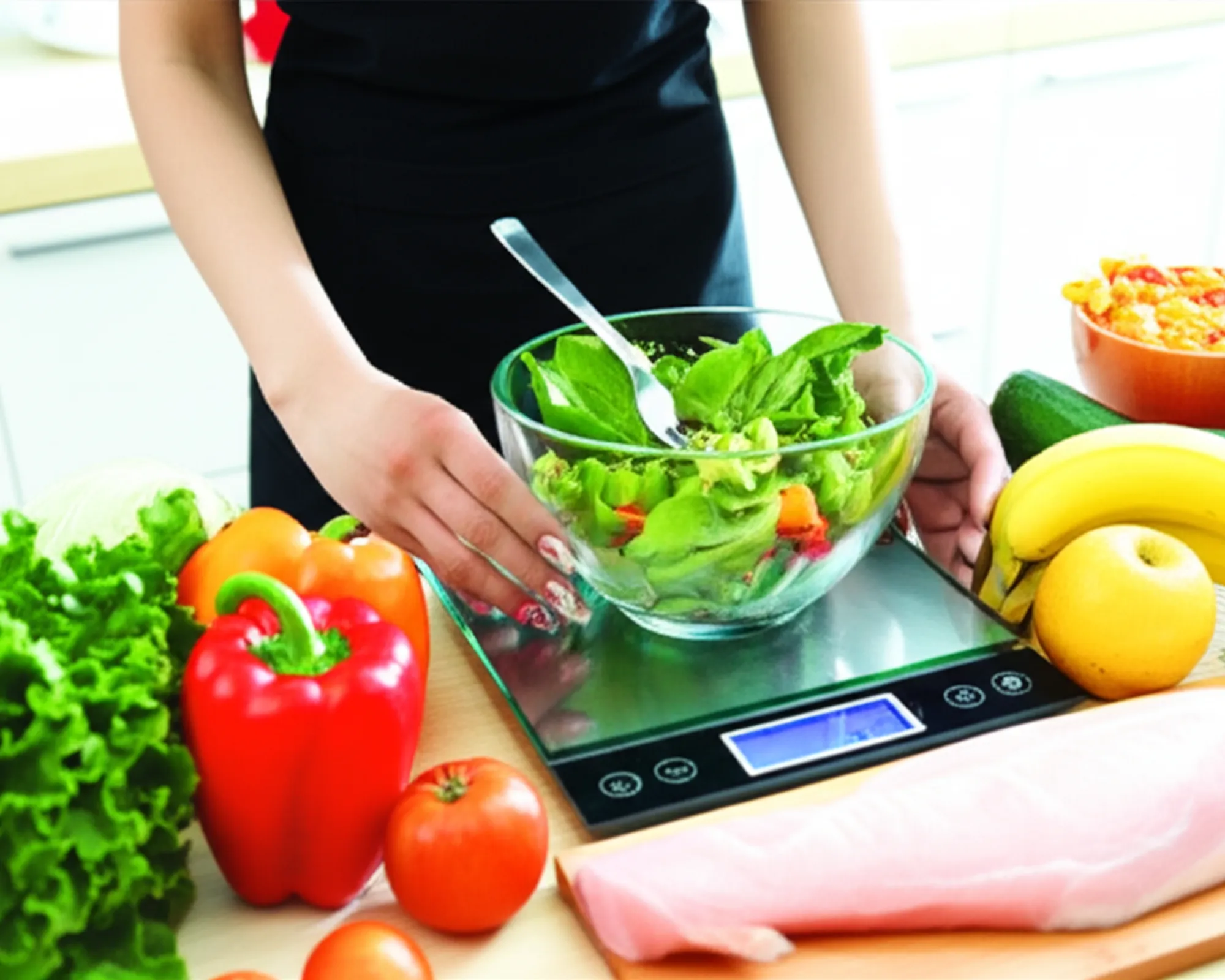Common Mistakes When Counting Macros (and How to Fix Them)

Macro counting, or tracking your macronutrients (proteins, carbohydrates, and fats), has become a cornerstone strategy for many fitness enthusiasts, dieters, and health-conscious individuals. It offers a precise way to understand what you're fueling your body with, helping you achieve specific goals like weight loss, muscle gain, or improved body composition. While the concept seems straightforward – input food, see macros – the execution often trips people up. Common mistakes can lead to inaccurate tracking, frustration, and ultimately, a lack of progress. If you've been diligently counting macros but not seeing the results you expect, it’s time to examine where you might be going wrong. Let’s dive into the most common pitfalls and, more importantly, how to fix them to get your macro tracking back on track.
Mistake #1: Not Weighing Your Food (or Estimating Portions Incorrectly)
This is arguably the most common and significant error. Many people rely on visual estimates, measuring cups, or serving sizes listed on packages. The problem? Our eyes can be incredibly deceiving, and serving sizes often refer to uncooked weights or specific, precise measurements that are hard to eyeball. A tablespoon of peanut butter can easily become two if you're not careful, and that "handful" of nuts could be double the actual serving. These small discrepancies, accumulated over days and weeks, can throw your caloric and macronutrient intake off by hundreds of calories, completely derailing your goals.
The Fix: Invest in a Food Scale and Use It Religably
A digital food scale is your best friend when it comes to accurate macro tracking. It's a small investment that yields huge returns in precision. Weigh everything: raw meats, cooked grains, vegetables, fruits, and even liquids. Measure in grams for the highest accuracy. It might seem tedious at first, but it quickly becomes second nature. Once you start weighing, you'll be surprised at how much your perceived portion sizes differ from reality. This single habit change can make the biggest difference in your tracking accuracy.
Mistake #2: Forgetting to Track Small Items, Condiments, and Beverages
It's easy to remember to log your main meals, but what about the dollop of ketchup, the splash of milk in your coffee, the cooking oil, or that handful of "just one" crackers? These seemingly insignificant additions are often overlooked, yet their calories and macros can add up remarkably quickly. Salad dressings, sauces, sugar in your tea, creamers, cooking sprays, and even some "zero-calorie" drinks can contain hidden macros or sweeteners that impact your overall intake. The mindset of "it's too small to matter" is a macro counter's worst enemy.
The Fix: Track EVERYTHING That Goes Into Your Mouth
If you consume it, track it. Period. This requires diligence, but it’s crucial for accuracy. For cooking oils, measure them before adding to the pan. For condiments, look up their nutritional information and log even small amounts. Many tracking apps have extensive databases for common condiments and ingredients. Make it a habit to scan labels for everything, no matter how small or insignificant it seems. Over time, you'll develop a better understanding of the caloric density of these items, allowing for more intuitive tracking.
Mistake #3: Relying Solely on Restaurant or Pre-Packaged Food Estimates
While many restaurants now provide nutritional information, it's often an estimate and can vary significantly based on preparation, portion size, and even the chef. The same goes for some pre-packaged foods, where "serving size" can be ambiguous or the nutrient content might have a margin of error. When a restaurant describes a dish, they might not account for the generous amount of butter or oil used in preparation. Similarly, a "large" pre-packaged meal might be inconsistent in its actual contents.
The Fix: Cook More at Home and Exercise Caution When Eating Out
The most reliable way to track macros is to prepare your own food, where you control every ingredient and its quantity. When dining out, choose simpler dishes (grilled protein, steamed vegetables), ask for sauces on the side, and don't be afraid to ask questions about preparation. If nutritional information is available, use it as a guide, but understand it's likely a lower bound. When in doubt, overestimate slightly, especially for fats. For pre-packaged foods, still use your food scale to verify the weight of the actual serving against what's listed on the package.
Mistake #4: Not Accounting for Cooking Oils and Hidden Ingredients
This point deserves its own spotlight as it's a common oversight. When you're cooking, those drizzles of olive oil, butter, or coconut oil add up very quickly. Just one tablespoon of olive oil contains around 120 calories and 14 grams of fat. If you're generous with your cooking fats and don't log them, you could easily be consuming hundreds of "hidden" calories and grams of fat each day without realizing it. The same applies to ingredients like cheese added to a dish, nuts sprinkled on a salad, or sugar in a homemade sauce.
The Fix: Measure and Track ALL Cooking Ingredients
Before you add that oil to the pan, measure it. Use a tablespoon or, even better, weigh it. Factor in every single ingredient that goes into your homemade meals. If you're batch cooking, calculate the total macros for the entire recipe, then divide by the number of servings you've portioned out. This ensures that every component of your meal is accurately represented in your daily totals. This might seem like a lot of work initially, but with practice, it becomes a streamlined process.
Mistake #5: Over-Complicating It or Aiming for Perfection
While accuracy is important, aiming for absolute, unwavering perfection can lead to burnout and an unsustainable approach. Some people get so caught up in hitting their macros down to the last gram that it becomes stressful and unenjoyable. This can foster an unhealthy relationship with food, where every meal is a numerical puzzle rather than a source of nourishment and enjoyment. Macro counting is a tool, not a dictator of your life.
The Fix: Focus on Consistency Over Perfection and Allow for Flexibility
Strive for "good enough" rather than "perfect." If you're within 5-10 grams of your target macros for each category, you're doing great. Don't stress over minor deviations. Focus on hitting your protein target consistently, as it's often the most critical for satiety and muscle preservation. Embrace flexibility – not every day will be 100% on target, and that's perfectly fine. Learn from slight misses and adjust, but don't let them derail your entire effort. The goal is long-term sustainability and progress, not short-term numerical exactitude.
Mistake #6: Not Adjusting Macros Over Time
Your body is a dynamic system. As you lose weight, gain muscle, or your activity levels change, your caloric and macronutrient needs will also change. Sticking to the same macro targets for months on end, especially if your body composition has significantly shifted, is a surefire way to hit a plateau. Your body adapts, and what worked initially might not continue to work indefinitely.
The Fix: Re-evaluate and Adjust Your Macros Periodically
Periodically (e.g., every 4-6 weeks or after significant weight changes), re-evaluate your progress and adjust your macro targets. If you're no longer losing weight, slightly reduce your calories (often by reducing carbs or fats). If you're struggling with energy during workouts, you might need to increase carbs. Use your tracking data and body progress (weight, measurements, photos, performance) to inform these adjustments. Consult with a qualified coach or nutritionist if you're unsure how to make these changes effectively.
Mistake #7: Obsessing Too Much and Developing an Unhealthy Relationship with Food
While macro tracking can be an empowering tool for control and understanding, for some, it can spiral into an unhealthy obsession. Constantly thinking about numbers, feeling guilty about perceived "bad" foods, or experiencing anxiety around eating out can signify a detrimental relationship with food. Macro counting should enhance your life, not consume it or detract from your mental well-being.
The Fix: Focus on the Bigger Picture and Prioritize Mental Health
Remember why you started counting macros: likely for health, fitness, or performance. If it's causing stress, anxiety, or disordered eating patterns, it's time to re-evaluate your approach. Take breaks from tracking, incorporate intuitive eating principles, and focus on overall healthy habits rather than just numbers. If you find yourself struggling with obsessive thoughts or behaviors, seek guidance from a registered dietitian or a mental health professional who specializes in eating disorders. Your mental and physical health are intertwined, and one should never be sacrificed for the other.
Conclusion
Macro counting, when done correctly, is a highly effective tool for achieving your health and fitness goals. By being mindful of common mistakes – from inaccurate measurements to overlooking small ingredients and over-obsessing – you can navigate the process more effectively and sustainably. Invest in a food scale, be meticulous with your tracking, cook at home more often, and remember that consistency triumphs perfection. Most importantly, listen to your body, adjust your approach as needed, and ensure that your macro journey supports both your physical and mental well-being. With these fixes in place, you’ll be well on your way to more accurate tracking and, ultimately, more satisfying results.


